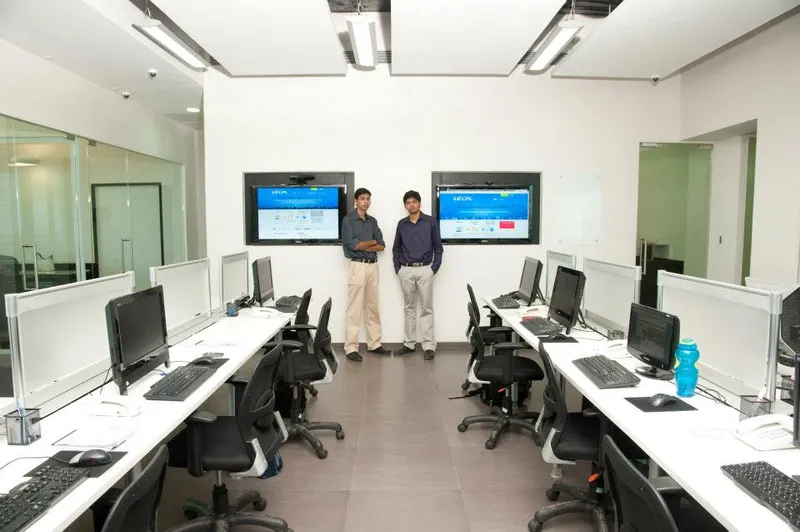Brothers diversify business towards gesture based technology; manage to get Rolls Royce as their client
The last time we interacted with the Agrawal brothers, Abhinav & Raghav, they had built the testing platform iLiftOff that promised to reduce overall recruitment time by 50%. This time, they're onto something totally different: The Fluid Motion.
Talking about their journey till date, Abhinav says, “iLiftOFF is now attaining significant traction in the financial space. We just onboarded one of the big four accounting and audit firms on the platform and are looking at wrapping up agreements with another firm just outside the big four. We have also launched our online testing api in April 2013 which is allowing our product to be integrated with other HR focused SAAS products. We have also now diversified beyond recruitment testing. Using our embed test functionality users can embed an online test literally anywhere just like surveys from survey monkey.”
Trutech, the umbrella under which they're starting up with these ideas now has three main areas of working that include the LMS and ERP for education, iLiftOff, and now The Fluid Motion. The 20-member team works out of their new office in Mumbai, and is striving to manage the company's diverse businesses.

The usage of The Fluid Motion's offerings can be divided into 4 distinct categories:
- The information application: It allows you to display information and pitch your product in any manner you want to, with a slideshow playing on the side. For example in hotels the customer can chart his route through the available hotel rooms, restaurant promotions and shops. Instead of going through timed presentations on TV in the lobby, the customer can now choose what he or she wishes to see and with a simple hand gesture, can select and view information available in his area of interest. The info app can be used quite effectively in areas such as hospitality, retail and restaurants. An easy to modify back end allows administrators to easily update the application with the latest information and pictures
- The retail application: This can be used to see the entire portfolio of products, with a flick of hands. Here the user can go through the entire catalogue of items for a particular outlet or showroom . This app is particularly targeted at the luxury retail segment such as jewellers as well as car showrooms. It can also effectively be utilized by realty players to showcase their different properties etc.
- Computer control boardroom application: Here a presenter can control his entire computer using gestures from a distance. The presenter can transition through the presentation with a flick of his hand rather than using a clicker or a keyboard. At a distance you can highlight any point on the presentation, extrapolate charts, and move to any slide within the presentation faster than ever.
- 3-D application: This application allows you to interact with a 3-dimensional image , design or blueprint which is rendered on the screen. It can recognize any gesture and can be programmed to react in any manner to any gesture. So you can use it to display a building’s rendering, a car’s interiors, play an instrument, use it in a school to help visualize concepts. Or you can choose a video, image or display and interact with it at a 3D level by zooming in and out, rotating it, exploring it from all angles or while displaying a potential use to your client.
Such a use of technology can leave a layman dazzled. So, I asked them whether it was a bit ahead of its time? To which, Abhinav replied, "We believe gestures are an intrinsically natural way for users to interact with displays. Typically most users are able to instinctively navigate our applications without any training or instruction. Also there is a lot of excitement among users to try out this new and highly natural way of interacting with the display."

The Fluid Motion team also believes that gesture technology shall surpass the touch based technology primarily because it can be used with huge sized screens, with the user standing up to 15 feet away. This is not possible in touch technology as the user has to stand right next to the display and has to stretch and move about to touch far off corners of the screen. Also, the gesture technology works with any display, thus eliminating the need for purchasing new equipments. It is also more reliable than the touch screen as, with time, the touch screen suffers from lower responsiveness. Also, the wear and tear is less as the user is not actually touching anything, and this also gets brownie points for being hygienic.
Fluid Motion applications typically start at Rs.2 lac for a base version which allows significant functionality for most retail purposes. They also develop custom apps for companies the cost of which depends upon complexity and can range from anywhere from 2 lacs to 10 lacs and above. They started working on The Fluid Motion a year ago and the technology is something we have developing over the last 12 months.
The Fluid Motion’s presentation application was recently used at the India Design Forum by the Indian School of Design and Innovation, where they utilized the technology to showcase the upcoming design school and latest courses in a really immersive and interactive way. It was big hit at the event. The team is also currently working with Rolls Royce for a project, details of which haven’t been revealed.
Here's a video on the Fluid Motion technology:
Yes, the technology and the final product is certainly dazzling, but is this even “necessary” at this stage? This is, precisely where, this duo is facing the major hurdle: in convincing people to adopt this new technology.







